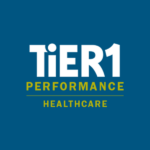Most healthcare organizations are moving to an electronic health record (EHR), and for good reason. An EHR can provide accurate patient information at the point of care in real time; gone are the days in which staff members must decipher a provider’s illegible writing to ensure that the correct orders are carried out. With the right EHR process in place, organizations are able to coordinate care between providers and across the continuum to reduce errors and provide safer care.
Yet, far too often when an organization embarks on the journey to implement electronic health records, responsibilities can be shifted or forgotten. Without the involvement of key stakeholders, accreditation surveyors often come across workarounds that create risk to patient safety. Frontline staff should be included to ensure processes are developed for ease and efficiency of use. Leadership should be engaged in assessing whether any recommended practice affects the healthcare organization’s ability to deliver safe, effective, and high-quality care.
Organizations may think their EHR process is survey ready, only to be disappointed upon learning they have unidentified safety risks noted on their accreditation report related to documentation. To mitigate safety hazards and known risks, we recommend proactive risk assessments that address specific areas that may require adjustment of the EHR configuration parameters. We recommend looking into three common risk areas.
1. Policy requirements vs. actual systems and processes
The first major risk area is that the actual systems and processes in place to capture EHRs don’t match the organization’s policy requirements. It is not a coincidence that the first thing that surveyors do when they come to your organization is look through a list of documents that you have prepared that include numerous policies. They want to know what the organization requires staff to do and document.
For instance, if an order is placed to titrate a drip to keep the Richmond Agitation-Sedation Scale (RASS) at a -2, the survey team will look for the documentation that supports the titration order. Far too often, surveyors find that key elements such as RASS are either not built into the system at all for the nurse to document or nurses are expected to navigate to another screen to document this component. Having the nurse toggle between multiple screens can be a risk to patient safety. There is also an increased probability that the nurse will assess the scale but not remember to document it because the documentation is not located in a place that mimics the required workflow.
2. Variation in electronic health record documentation
The second common risk to patient safety has to do with variation. Have you ever heard the old saying, variation is enemy? During the survey process, it can be. Accrediting agencies do not require or recommend a specific format for health records. At the time of survey, health records are evaluated on consent based on the defined standards of the accrediting agency. However, when surveyors review an EHR, they are looking for consistencies in documentation across the organization. If each department has its own approach to documenting an EHR, it can be a red flag for surveyors.
One example could be the documentation for a time out. Let’s say that in one area of your organization, the nurse records the time out as “correct patient, correct site, correct procedure.” Yet in another department, the nurse records it as “time out completed.” A surveyor is going to notice the difference in documentation and refer to your organization’s policy to see which one is correct.
Standardization across all areas of your organization ensures that required elements are made clear to staff and practitioners. Wrong-site, wrong-patient, and wrong-procedure surgery continues to be one of the most frequently reported events voluntarily reported to the Joint Commission, with 95 reported events in 2017. High-reliability organizations reduce the variability within their documentation to achieve zero harm.
3. Staff confidence in electronic health record processes
You’ve identified risk areas and hazards and taken steps to address them. However, there’s one more important thing to address: Your organization’s EHR process is only as good as your staff’s ability to confidently navigate that process. Otherwise, patient care can be impacted by the nurse forgetting a crucial step due to uncertainty or missing a key detail from the patient during documentation. There’s significant added value (such as strengthened workflows) in getting others involved during the risk assessment.
Another thing to keep in mind: During the survey, your staff will be sitting with the surveyor to look at the health record retrospectively in some cases. This can be very difficult if staff are not used to looking at a record in this environment. Staff might also be uncomfortable navigating the record if something requested was documented in a different department. The survey process will go smoother if staff are able to navigate the record with confidence and ease. Consider nominating someone on staff to be a “super user” who is available to assist staff in navigating the record to locate information requested by the surveyor.
Practice tracers are an excellent way for your staff to gain the confidence they need to locate the following key documents:
- History and physical exam
- Initial nursing assessment and physical exam
- Pain assessments and reassessments after interventions
- Screenings for suicide risk, including in-depth assessment and appropriate interventions if positive
- Falls risks and interventions taken
- Care plans
- Physicians’ orders
- Medication administration record
- Informed consents
- Operative report (immediate note and official report)
- Pre-anesthesia assessment, anesthesia record, and post-anesthesia assessment
- Restraint assessments/monitors
- Discharge plans
Minimizing safety risks and ensuring compliance
Is your electronic health record process built to minimize safety risks and ensure compliance with required documentation elements? The best way to test your organization’s readiness is to pull records throughout the organization on various topics. For instance, if invasive procedures are performed in numerous areas, then pull one from each area and look for areas in which staff are not documenting according to the policy and for variation in charting. If you notice you have a variation, consider completing a focused risk assessment. The Office of the National Coordinator for Health Information Technology (ONC) has published SAFER guides that assist healthcare organizations in identifying areas within the EHR to improve the overall safety of the health care system.




